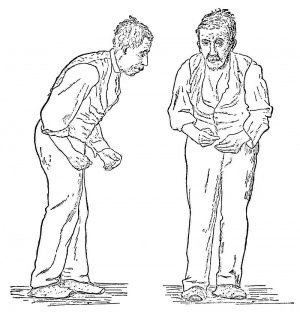Blocq’s Disease: When the Body Speaks the Mind

Imagine watching someone try to walk. Their steps are wide and unsteady. They sway dramatically, sometimes lurching forward as if about to fall—only to recover at the last moment. The scene may look alarming, even theatrical. But for the person experiencing it, it’s very real. This condition is known as Blocq’s Disease, or Astasia-Abasia.
What Is Blocq’s Disease?
Blocq’s Disease is a rare condition characterised by an inability to walk or stand normally, despite having no detectable physical or neurological damage that could explain it. It’s named after Paul Blocq, the French neurologist who first described it in the late 19th century.
The key features include:
- Astasia: the inability to maintain a stable standing posture.
- Abasia: the inability to walk properly.
People with this condition may exhibit a bizarre gait—marked by dramatic swaying, staggering, or sudden collapsing—yet they often avoid serious injury. Interestingly, they may be able to move their legs normally while lying down or when distracted, further suggesting that the issue lies not in the muscles or nerves but somewhere else: the mind.
Not a Physical Disorder
One of the most striking aspects of Blocq’s Disease is that the symptoms do not align with any known organic lesion in the nervous system. There’s no paralysis, no loss of coordination, and no muscular weakness that can explain the behavior. This can be puzzling, even frustrating, for both patients and doctors.
In medical terms, Blocq’s Disease is classified as a conversion disorder—also known as a functional neurological symptom disorder. In the ICD-10, it is listed under dissociative motor disorders, and in the DSM-IV, it falls under conversion disorder.
Why Does It Happen?
The term “conversion” comes from the idea that psychological stress or conflict is “converted” into physical symptoms. People with conversion disorder are not faking it—the symptoms are involuntary and often distressing. These individuals may be experiencing intense emotional conflict, trauma, or underlying psychological conditions that manifest through the body.
Astasia-abasia may appear in contexts of:
- Acute emotional trauma or stress
- Dissociative disorders
- Certain psychiatric illnesses (e.g., somatization)
- Rarely, as part of a malingering or factitious disorder—but this is uncommon and difficult to prove
Diagnosis and Management
Because there’s no specific test to diagnose Blocq’s Disease, it becomes a diagnosis of exclusion. This means that doctors must first rule out neurological disorders such as Parkinson’s disease, multiple sclerosis, or cerebellar ataxia. Once those are excluded, and the presentation is found to be inconsistent with any organic cause, the diagnosis of conversion disorder is considered.
Treatment typically involves a multidisciplinary approach, including:
- Psychoeducation: Helping the patient understand the mind-body link.
- Cognitive Behavioural Therapy (CBT): To explore and resolve underlying psychological stress.
- Physical therapy: To gradually restore normal motor function.
- Supportive psychotherapy: To build insight and resilience.
In some cases, symptoms may resolve spontaneously, while in others, recovery takes time and patience.
Compassion Over Stigma
Sadly, people with Blocq’s Disease often face misunderstanding. The dramatic appearance of the gait, coupled with the absence of clear physical findings, can lead to scepticism from both professionals and the public. But this condition is not about pretending or seeking attention—it’s a cry from the unconscious mind, expressed through the body.
Final Thoughts
Blocq’s Disease reminds us that the line between mind and body is not as clear as we might think. It’s a powerful example of how deeply our emotional life can shape our physical experience. Understanding this condition not only helps in healing—it also encourages a more compassionate, holistic view of health.



Comments (0)